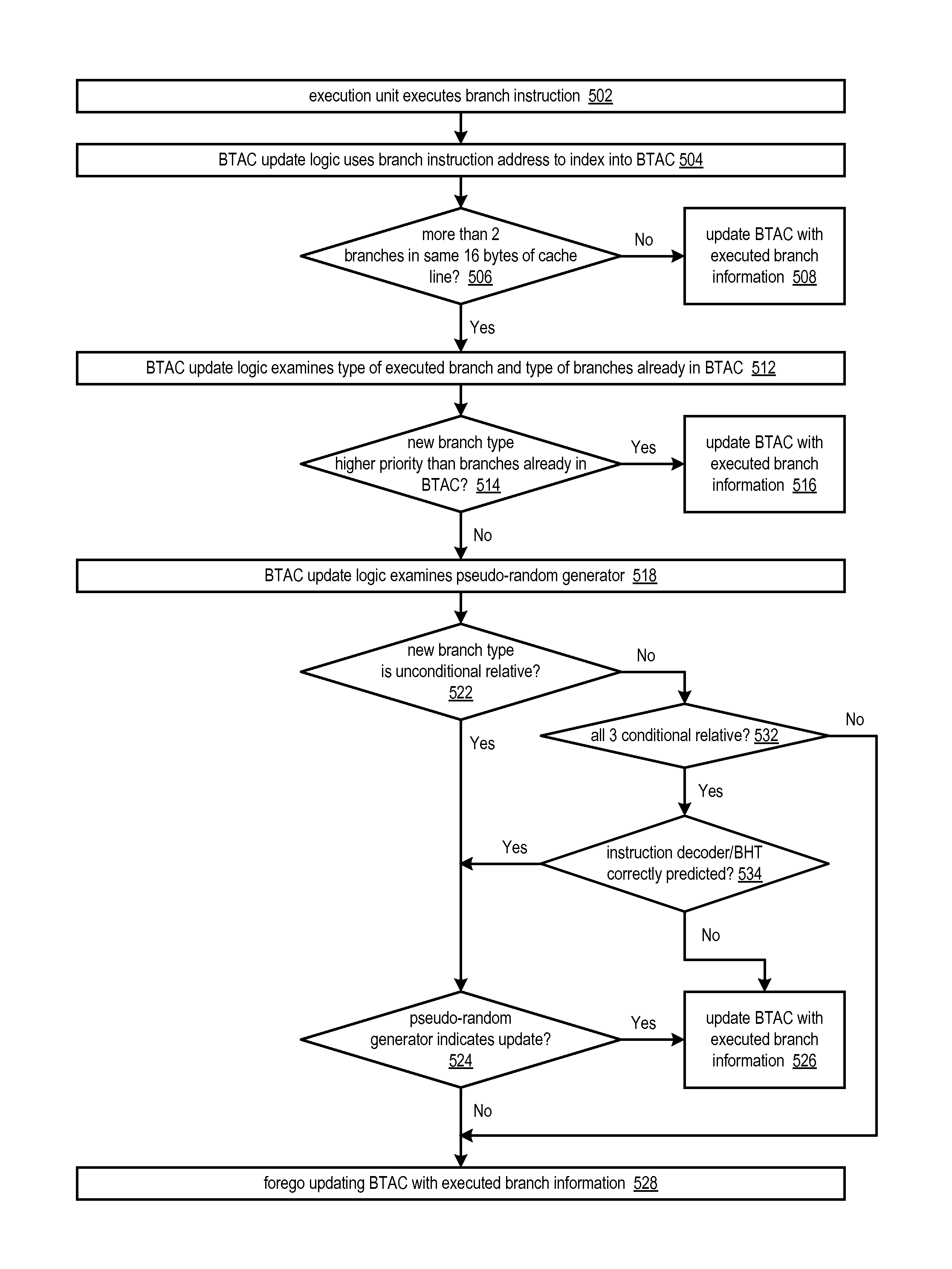Efficient branch target address cache entry replacement
a branch target address and cache technology, applied in the field of microprocessors, can solve the problems of affecting performance and limiting the storage of the branch target address cache (btac), and achieve the effect of increasing the priority of replacemen
- Summary
- Abstract
- Description
- Claims
- Application Information
AI Technical Summary
Benefits of technology
Problems solved by technology
Method used
Image
Examples
Embodiment Construction
[0012]In order to minimize the performance hit caused by the problem described above, embodiments are described herein that employ a replacement policy for the situation where an additional branch instruction (e.g., a third branch) is seen in the same portion, or quantum, e.g., 16-bytes, of a cache line fetched from an instruction cache. The replacement policy is a priority scheme based on the type of branches involved, with a pseudo-random provision for overriding the priority scheme to accommodate corner cases.
[0013]Referring now to FIG. 1, a block diagram illustrating a microprocessor 100 according to the present invention is shown. The microprocessor 100 includes an instruction cache 102 that is accessed by a fetch address 142 provided by a fetch unit 104. The fetch unit outputs the fetch address 142 value by selecting one of a plurality of addresses provided by various sources, which include: the fetch address 142 itself; the next sequential fetch address 144 provided by an add...
PUM
 Login to View More
Login to View More Abstract
Description
Claims
Application Information
 Login to View More
Login to View More - R&D
- Intellectual Property
- Life Sciences
- Materials
- Tech Scout
- Unparalleled Data Quality
- Higher Quality Content
- 60% Fewer Hallucinations
Browse by: Latest US Patents, China's latest patents, Technical Efficacy Thesaurus, Application Domain, Technology Topic, Popular Technical Reports.
© 2025 PatSnap. All rights reserved.Legal|Privacy policy|Modern Slavery Act Transparency Statement|Sitemap|About US| Contact US: help@patsnap.com



